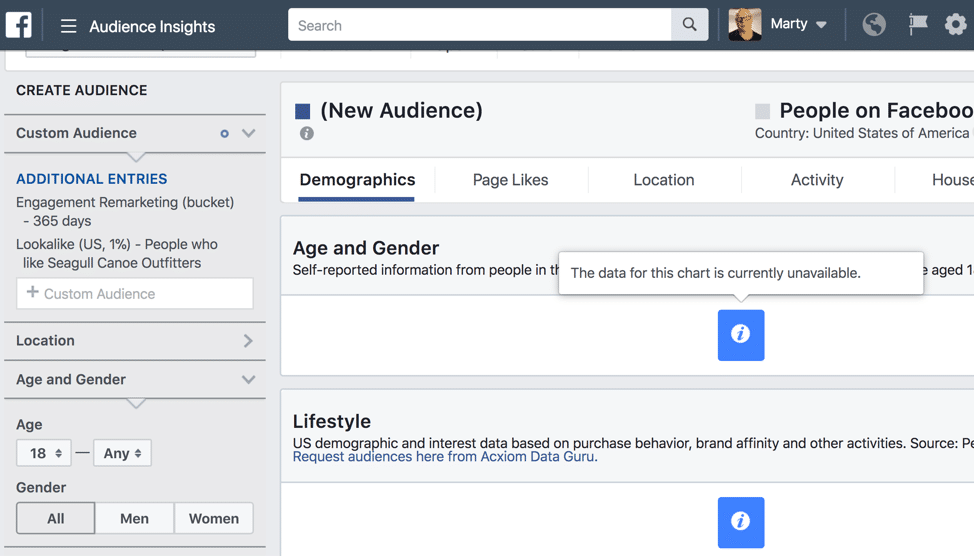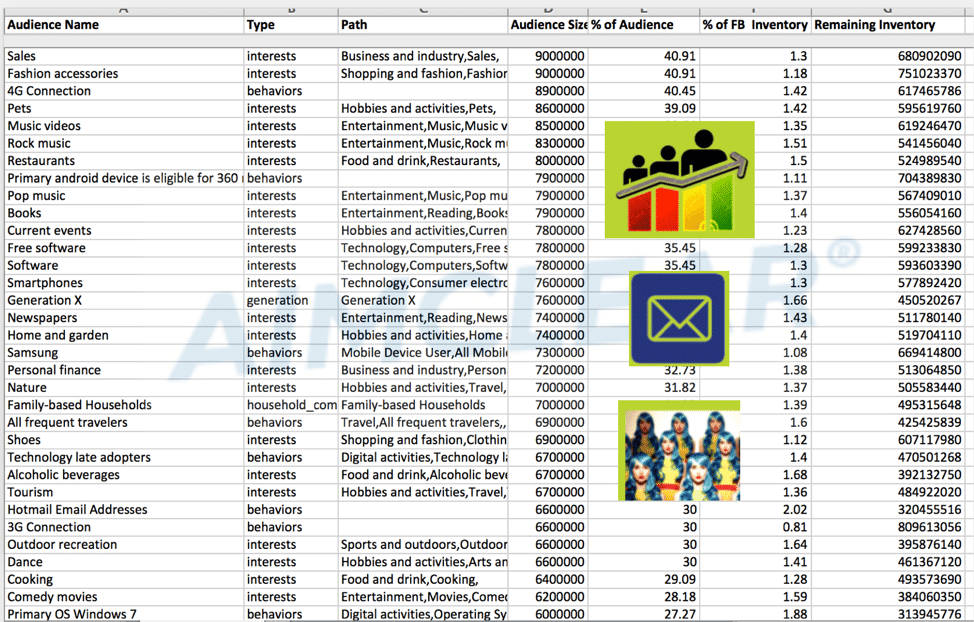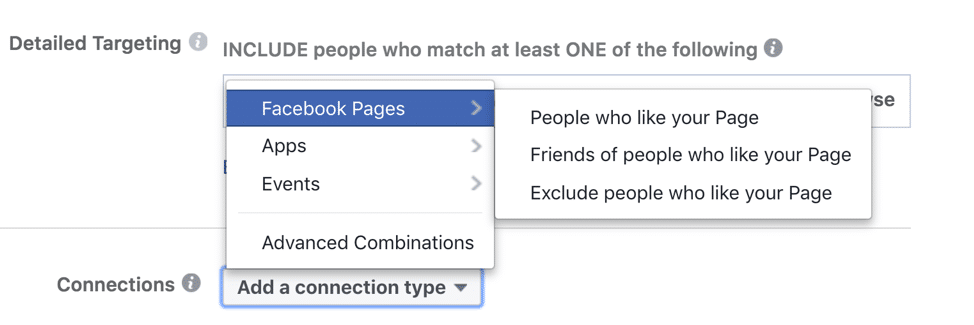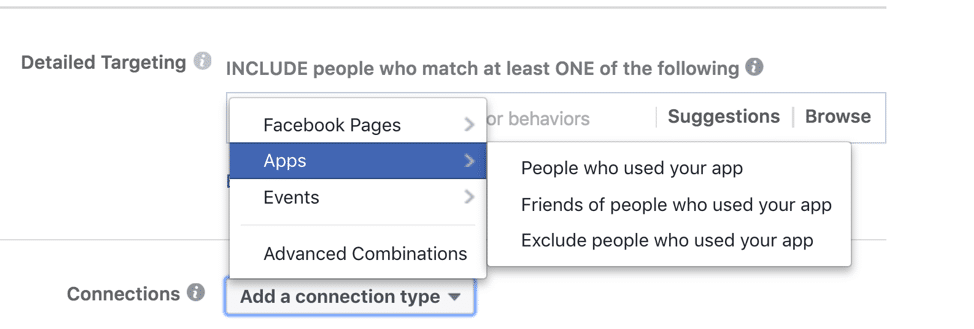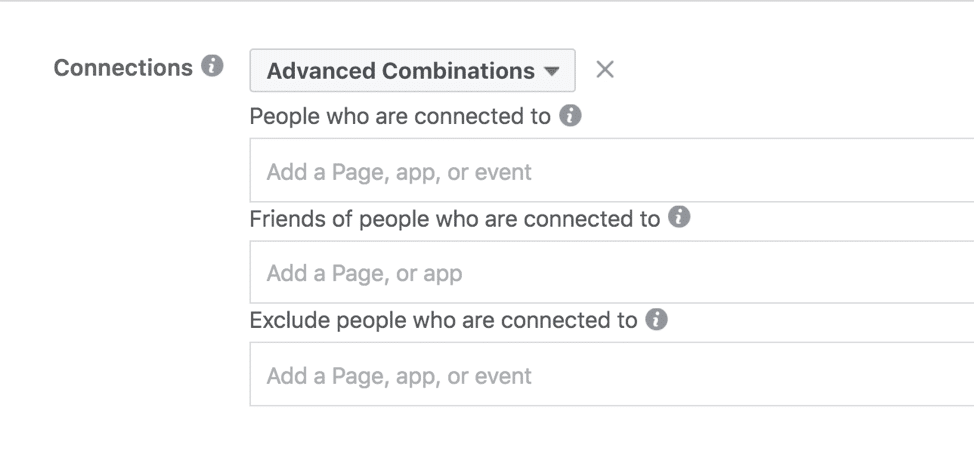Facebook has removed the ability to analyze Custom Audiences everywhere it was previously possible (API, Audience Insights, Campaign Reach, etc.). This development is troubling on a few levels.
This post explains the cause, ramifications and offers workarounds, so we can still gather FB data about audiences. The solution is not elegant as straight-up study of Custom Audiences, but it works well enough for today.
Here’s what FB’s vaunted Audience Insights tool looks like today, when we try to study a Custom Audience. Nice? Not so much.
As such, marketers, anthropologists, professors, philanthropists, ass-wipe hackers – all of us just lost our easiest (not the only) access to the greatest psychographic audience profiling tool in the history of Earth. Damn, this is a major tech regression.
It’s particularly painful, as if Google took away keywords in the twelfth year of AdWords.
Why did FB yank down Custom Audience analysis in such knee-jerk fashion? Well, a smart Northeastern professor reported that clever users can hack the system to uncover attributes of an individual.
We’ve seen the rounding tipping bug for over a year. When Facebook reports subtractive reach as we add filters to Custom Audiences, a single email address can tip the rounding algorithm.
Our question is, what kind of asshole would use FB this way?
Any marketer who needs to know that much on the individual in order to sell can’t be a very good marketer.
The Northeastern University find, in tandem with recent bad PR, was too much for FB and they pulled the Custom Audience reach estimate AGAIN, after marketers had just regained the capability. Once and again, Facebook left gaping holes in what used to be a powerful tool – one that should come back again (fingers crossed).
AIMCLEAR was an early evangelist of Custom Audience Analysis and built an API tool that looped through every FB targeting attribute on the API + any custom variables. The tool was actually more powerful than Facebook Audience Insights because it directly mapped back to targeting rather than abstract psychographic profiles like “Established Elite” (whatever the hell means). Our tool allowed testing of any Custom Audience to reveal the percentage of any targeting attribute existing in the audience. The capability is gone – for now. Not to worry, there are other FB approaches as well as pursuits in other channels.
Custom Audience analysis meant we look at traffic to any website page and get a ton of information about those visitors. We can see how much they earn, purchase affinities, peccadillos – pretty much anything we can target with Facebook Ads. Because Custom Audiences can be formed from email lists, website visitors and other behaviors, we had the psychographic world in the palms of our hands. Here’s what we could easily do with stock FB tools last week.
- Study pages – single & themed clusters, slice success traffic/emails, etc. To understand audiences.
- Build mind blowing persona reports.
- Parse empirical purchase affinities, in other words knowing what Custom Audience members intend to buy soon! Think how powerful understanding income and purchase behaviors of page visitors can be to whoever sells banner ads for those pages.
- Advise creative strategy & content treatments.
- Crank perfect amplification targeting for those content treatments.
- Comprehend keyword psychographics. Seriously, we are testing our ability to prevent search, but understand the psychographics of KW audiences, targeting them with keywords large in social creative, and siphoning off searches before users search.
- Segment Influencers.
- Map lookalike extrapolation: Yeah, we were able to look at the base audience, the lookalike, and compare FB’s expansion (line by line), targeting one attribute after another.
Workaround – 1 of 2
Facebook Connections Targeting, NOW the ONLY way to forensically slice audience psychographics. The good news is FB users who engage can be easily studied using free FB tools in Audience Insights, the API and subtractive campaign reach. Get a FB user to become a connection, like your page, use your app, engage with an event and/or any advanced combinations thereof. THEN they can they easily be studied. Yep, still works.
The trouble is, since connections are known, the tipping/rounding issue may apply.
Interestingly, the ol’ “Likes” campaigns approach (from days gone past) may now finally be useful. Why? Because we can study those who “like” your page. Keep in mind, most savvy marketers abandoned KPIs tied to acquiring followers or likes, because data wasn’t always representative of users actively in the funnel. Likes count did not matter past faux street cred.
But for now, for NEW, highly targeted likes campaigns driven by ads, we may get useful data driving users to engagement for frolic and study. Maybe FB will give us a disavow function to diss any old bullshit likes, LOL.
These are FB’s current Connections targeting options:
Unfortunately, this capability is also rife for abuse, for which FB will probably be scapegoated. Soon we may see marketers building mechanisms on their websites to steal unauthorized FB page likes, just from the user visiting their website. Why? Because we can study Connections. That’s why, just kidding 😈
Back to the Future, the Best Workaround
In the old days we didn’t have Custom Audiences, let alone the ability to study them. Still, we made major psychographic marketing strides. Remember the magic:
- Drive traffic from social psychographic targeting to your website. Keep track of that targeting and creative through UTM tags.
- Set Google, FB and any first-party cookies on your site.
Because traffic came from very specific targeting, we KNOW what the audience is. No analysis required. That’s what I talked about at mozCon in 2012. SO, the answer is to go old school. Keep track of who’s in the audiences we’re building on our site and in-social engagement retargeting. Market to these known audiences with RLSA, filtered FB retargeting ,etc.
We win again by keeping track of the data behind every inbound audience targeting and creative.
For now, rest in peace custom psychographic audience analysis. And while we’re at it, Screw YOU, Cambridge Analytica. Ethical marketers everywhere are paying a price for shithead. If history repeats itself (which is has a habit of doing), there’s a likelihood we’ll see Custom Audiences reach again – perhaps diminished. Facebook knows it has a valuable resource on its hands.
In the meantime, we’ll need to hack out psychographic data the old-fashioned way, which still works well. Also, there are a handful of semi-nefarious plays that work. Wielded by marketers with good integrity, the pace of psychographic developments is only muted today. It is not destroyed.

